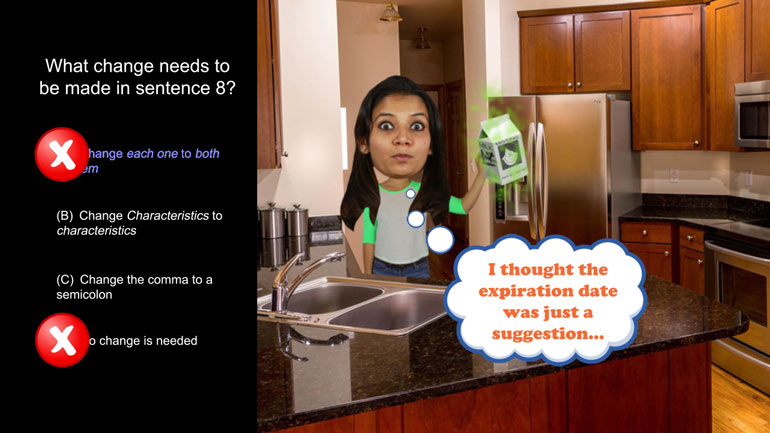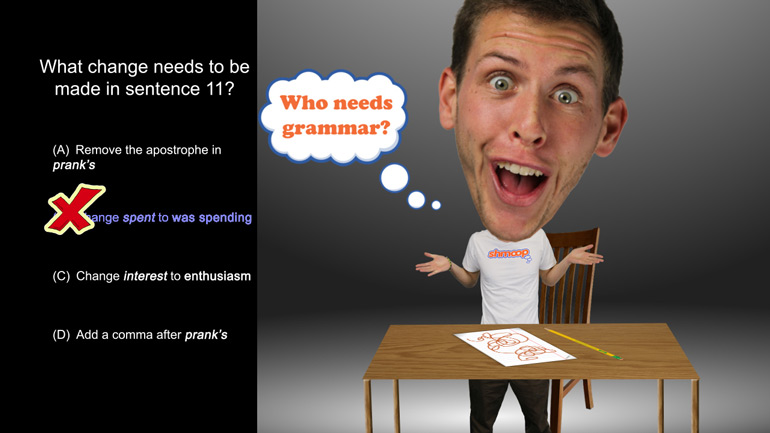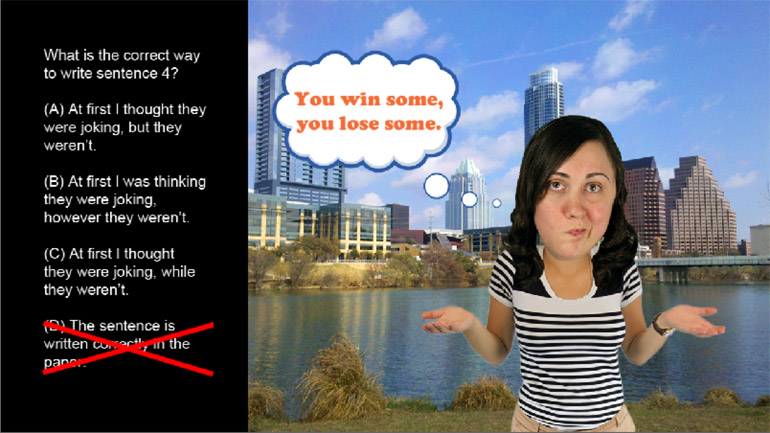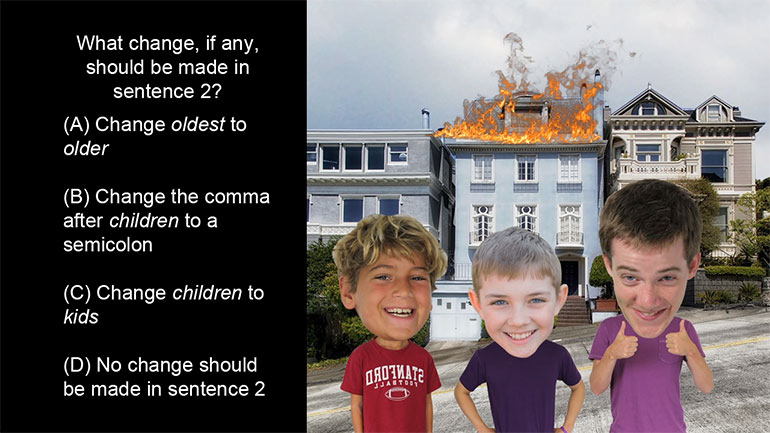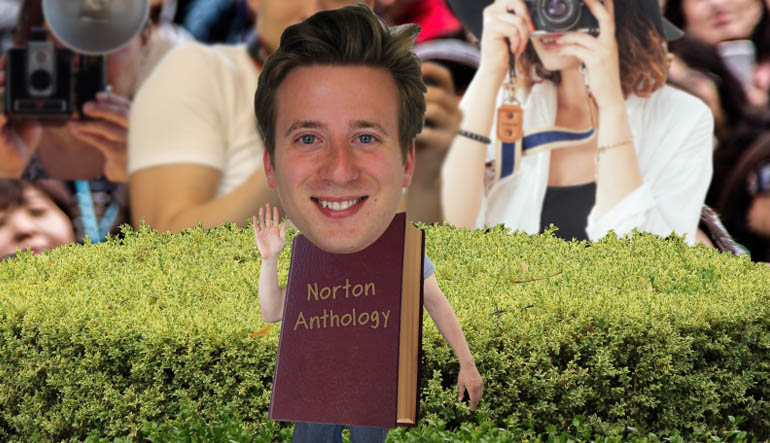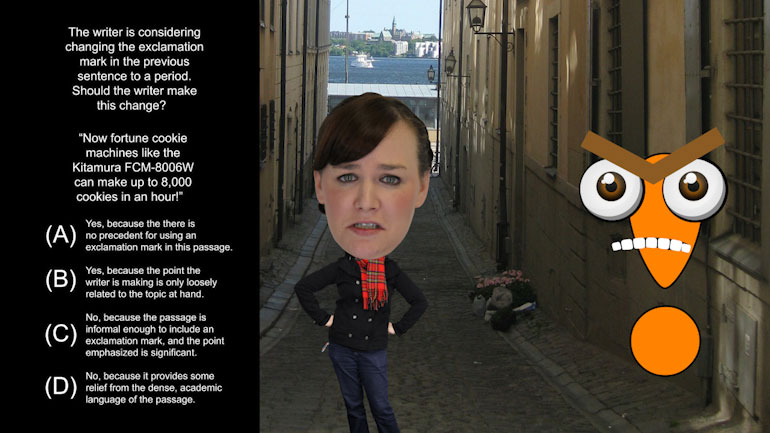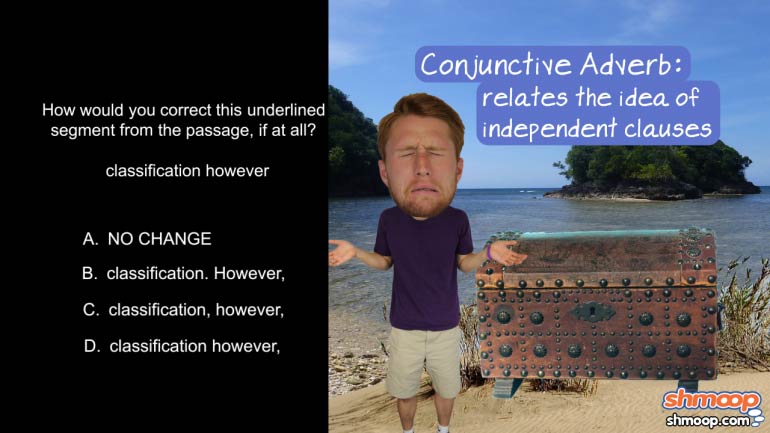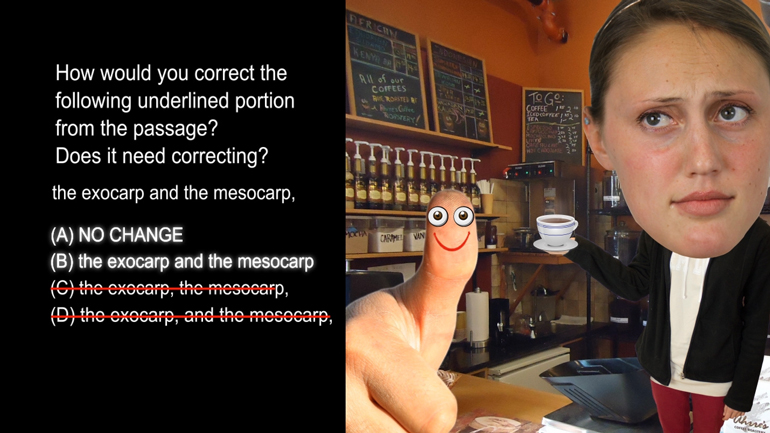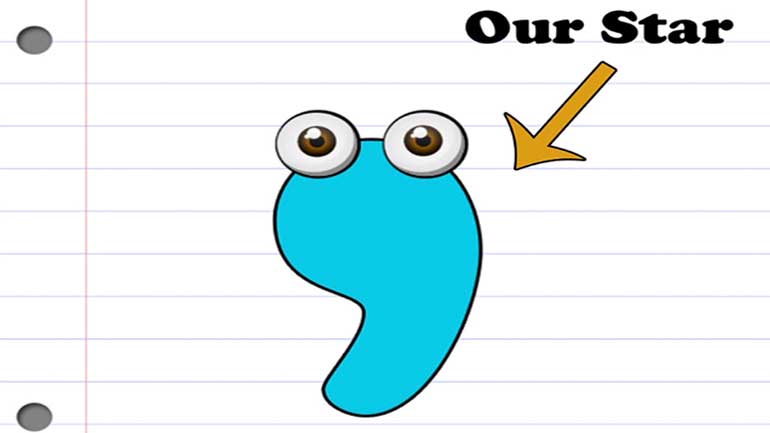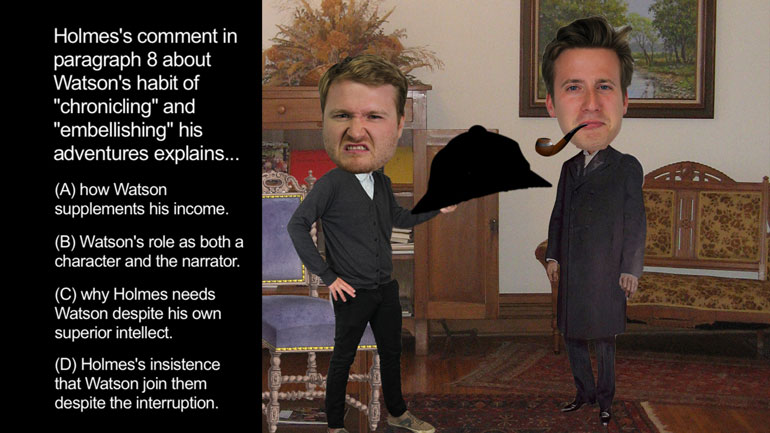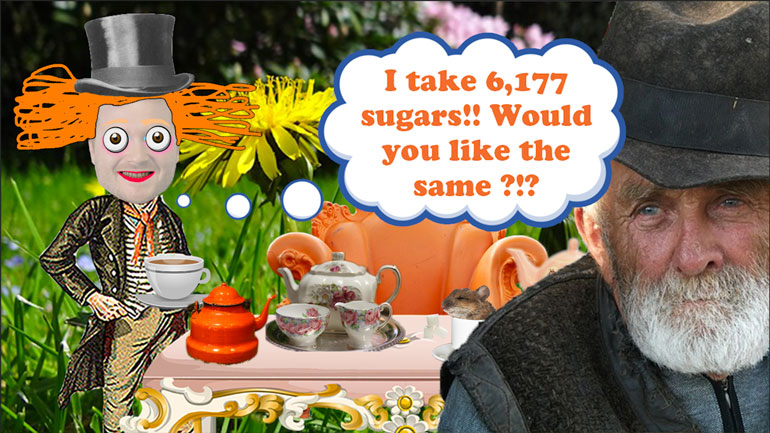ShmoopTube
Where Monty Python meets your 10th grade teacher.
Search Thousands of Shmoop Videos
Handwriting, Capitalization, Punctuation Videos 26 videos
Want to pull an Oliver Twist and ask us for more? We've gotcha covered. Click on the link for more Texas EOC goodness. Porridge not included.
ACT English 3.13 Passage Drill 197 Views
Share It!
Description:
ACT English: Passage Drill 3, Problem 13. Which punctuation mark fits best between the words in the underlined portion?
Transcript
- 00:04
Here's your Shmoop du jour, brought to you by condensed water. It's a lot tastier than condensed milk.
- 00:13
Check out the following passage...
- 00:25
How would you correct this underlined segment from the passage, if at all?
- 00:30
condensate—moisture
- 00:33
And here are the potential answers...
Full Transcript
- 00:41
This question asks us to identify the punctuation required to link the main clause to the phrase
- 00:45
that tags along at the end of the sentence.
- 00:48
Somehow or another, we have to find a way to attach...
- 00:51
"Most of the water seen in the funnel of a waterspout is actually condensate"...
- 00:58
to...
- 00:59
"moisture in the air resulting from the condensation of water vapor"...
- 01:05
without breaking any of the holy laws of grammar.
- 01:10
Choice (D) suggests that we not use any punctuation whatsoever.
- 01:14
This is a mistake, though. We definitely need some kind of punctuation to separate the phrase
- 01:18
from the main clause.
- 01:20
Without punctuation, it becomes nearly impossible to understand that the phrase is helping to
- 01:24
define condensate.
- 01:25
And we know that everybody out there is dying to know what that is so...
- 01:29
(B) is wrong because it uses a semicolon incorrectly.
- 01:34
Semicolons are mainly used to link two independent clauses, meaning clauses that can stand on
- 01:38
their own as complete sentences.
- 01:40
Though the main clause is independent, the phrase that follows doesn't have its own verb,
- 01:45
so it's totally dependent on the main clause for its existence.
- 01:49
Which must be kinda stressful for the main clause.
- 01:51
(C) is incorrect for a similar reason. By putting a period between the clause and the
- 01:57
phrase, (C) is declaring that the phrase is ready to stand as an independent clause.
- 02:01
Unfortunately, this is not the case.
- 02:03
Without a verb, the phrase just isn't ready to face the world alone.
- 02:08
The correct answer is (A). Though a comma would also work here, it's totally OK to use a dash.
- 02:14
Dashes are useful when a writer wants to really emphasize something. So using a dash is a
- 02:18
way of connecting something to a sentence, while also creating some distance.
- 02:22
Thus, romantic relationships between clauses and phrases linked by dashes are notoriously hard to navigate.
Related Videos
ACT English: Punctuation Drill 3, Problem 1. How should this sentence be changed so that it is grammatically correct?
ACT English: Punctuation Drill 2, Problem 1. Which choice of punctuation best completes the sentence?
ACT English: Punctuation Drill 2, Problem 2. Where should the semi-colon be placed?
ACT English: Punctuation Drill 3, Problem 2. How should we properly hyphenate the words in this sentence?
ACT English: Punctuation Drill 3, Problem 4. Which choice best formats this list of items?
